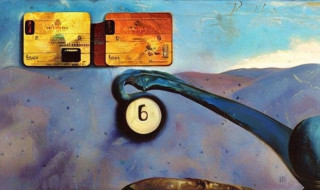In Part 4, we developed an intuitive approach for converting business events into coded journals.
We also established two rules relating to the movement of value into debt and revenue:
- Rule: An increase in revenue is always negative.
- Rule: An increase in debt owed is always negative.
Below we focus on the difference between these two rules and how this difference directly impacts financial reports.
#24 - Chart of Accounts
Under #13, we established that every organisation is free to choose a list of container buckets - for example Customer, Landlord, Sales, etc. This list is called the chart of accounts.
The accounting term for a specific bucket from this list is called a general ledger account and is often abbreviated to GLA. Value flows into or from general ledger accounts via journals.
#25 - Each GLA must have a Category
The general ledger account name (Customer, Sales, etc) serves two purposes:
- it provides a unique handle to the account -and-
- it is a general 'suggestion' to humans about what kinds of value are likely to move into and from the account
Using just the name to suggest what a GLA actually contains is not enough to correctly roll up into the Income Statement and Balance Sheet report. Because of this ambiguity, every GLA is marked with a category to help with the correct roll ups during financial reporting.
#26 - Each Category has a Type
There are four general ledger account categories. Each category in turn belongs to either the balance or flow type - the four categories and associated types are as follows:
Balance type categories:
• Asset
• Liability
Flow type categories:
• Income
• Expenditure
#27 - Category drives Reporting
Again, the aim of accounting is the recording of movement between general ledger accounts and the reporting of such movement using a Balance Sheet and Income Statement.
The reporting process is automatic and deterministic because every general ledger account has a pre-assigned category and in turn every category has a pre-assigned type, meaning:
- GLAs with a balance type accumulate in the Balance Sheet.
- GLAs with a flow type accumulate in the Income Statement.
#28 - Correct Categories mean Accurate Financials
Recall that an increase in either revenue or debt is negative.
For example, in #19 we considered $400 worth of deposits from customers
(Customer → 400 → …) with a corresponding increase in bank (… → 400 → Bank).
By assigning the asset category (balance) to customer, our 'balance sheet' correctly shows the money in the bank isn't ours but instead represents a liability to our customers - we cannot legitimately pocket customer deposits indefinitely meaning the current net value of the business is zero.
| Customer (Deposits) | USD | (400) |
| Bank | USD | 400 |
| Net: 0 |
If we had inadvertently assigned the income category (flow) to Customer, we would have produced a very different set of financials incorrectly showing a profit of $400 and a business valuation of $400 instead of zero.
It should now be clear why assigning the incorrect category to a general ledger account can fundamentally alter the balance sheet and income statement.
#29 - Discerning GLA Categories
In #21 we examined five typical events and their respective journals:
| Event | Description | Movement | Journal |
|---|---|---|---|
| EVENT‑1 | Sale for cash | Revenue → 200 → Bank | Revenue (200) Bank 200 |
| EVENT‑2 | Sale on credit | Revenue → 64 → Customer | Revenue (64) Customer 64 |
| EVENT‑3 | Customer pays off debt | Customer → 64 → Bank | Customer (64) Bank 64 |
| EVENT‑4 | Pay electricity bill | Bank → 13 → Electricity | Bank (13) Electricity 13 |
| EVENT‑5 | Record rent owed to landlord | Landlord → 38 → Rent | Landlord (38) Rent 38 |
The categories relating to the general ledger accounts in the above table are as follows:
| Customer | … is an … Asset | (a Balance) |
| Bank | … is an … Asset | (a Balance) |
| Landlord | … is a … Liability | (a Balance) |
| Electricity | … is … Expenditure | (a Flow) |
| Revenue | … is … Income | (a Flow) |
| Rent | … is … Expenditure | (a Flow) |
How did we know that, for example Customer belongs to the Asset category?
For beginners, this is the most difficult part of accounting but after applying intuition, it eventually becomes second nature. Here is the basic approach:
- We speak of 'an' Asset or 'a' Liability - the article 'an' or 'a' is a hint that these general ledger accounts represent a static quantity at a point in time. You don't for example have a Customer balance over the year - you have a Customer balance at the end of the year (or some other specific point in time)
- When we speak of Income and Expenditure, we don't normally refer to 'a' Rent or 'a' Sales - that is because these general ledger accounts represent quantity flow over a period of time. For example, you have Sales for the Year, not Sales at 31 December.
Recap:
- Asset is the opposite of Liability and both are reported at a point in time on the Balance Sheet.
- Income is the opposite of Expenditure and both are reported over a period of time on the Income Statement.
Summary
We learned that:
- Value never moves in isolation. There must be a source bucket and a destination bucket. Movement is the common glue between these buckets. These source and destination buckets are commonly known as general ledger accounts or GLAs for short.
- Every GLA has a category - the possible category values are income, expenditure, asset and liability.
- The category of a given GLA determines which financial statement (Balance Sheet or Income Statement) its GLAs roll up into.
This part and Part 4 required a logical approach to analysing day to day business events and are probably the most difficult to understand.
These tutorials delivered the concepts by way of five examples and scrutiny. Using intuition you will be able to work out the journals of other business events.
In the next part we learn about Retained Income, a 'special' general ledger account and how we use this GLA to assist in the creation of the Balance Sheet.

